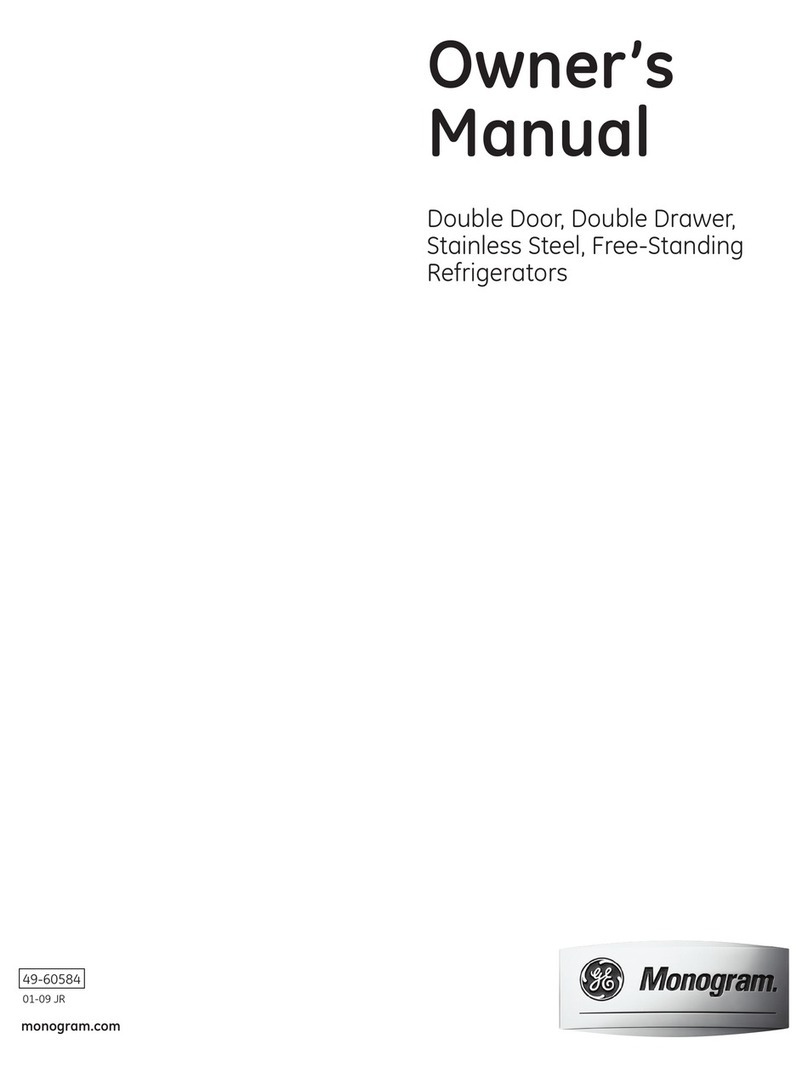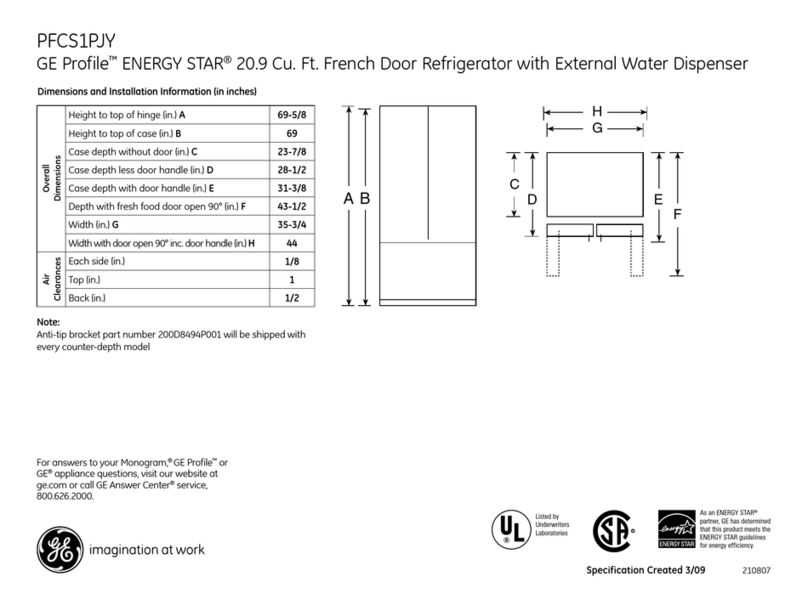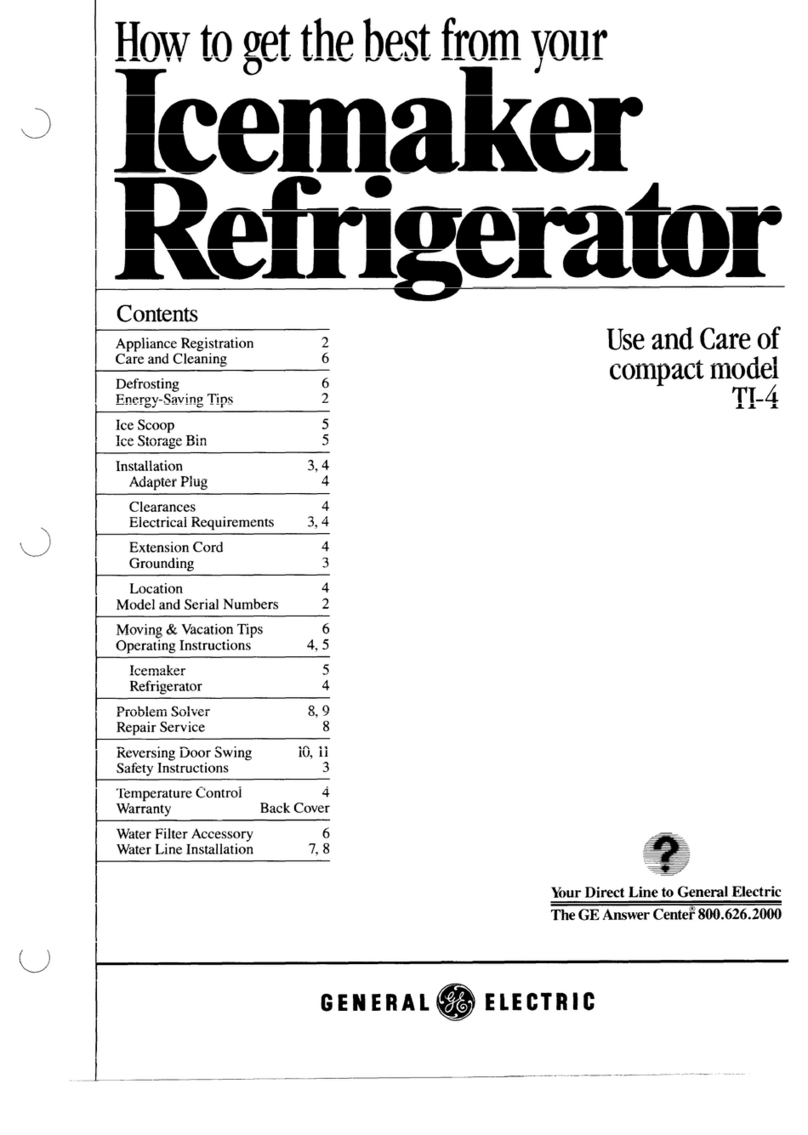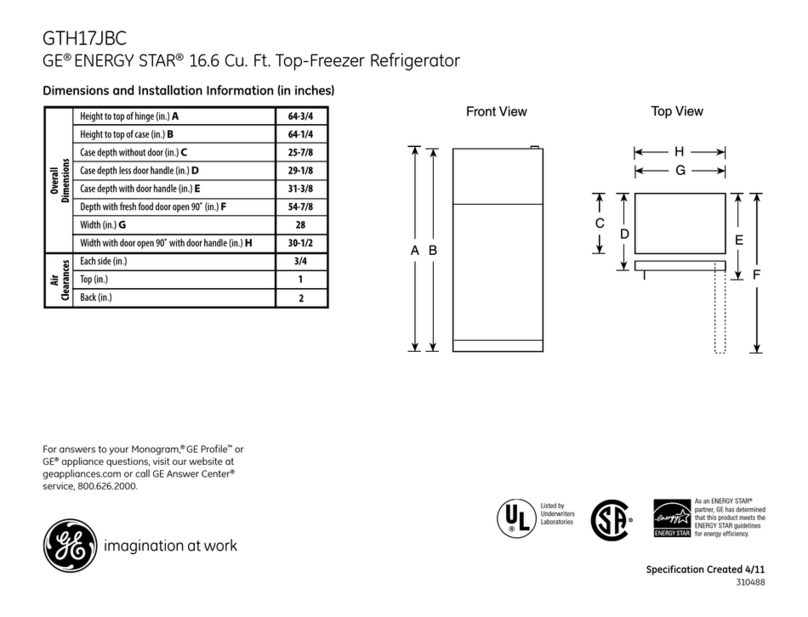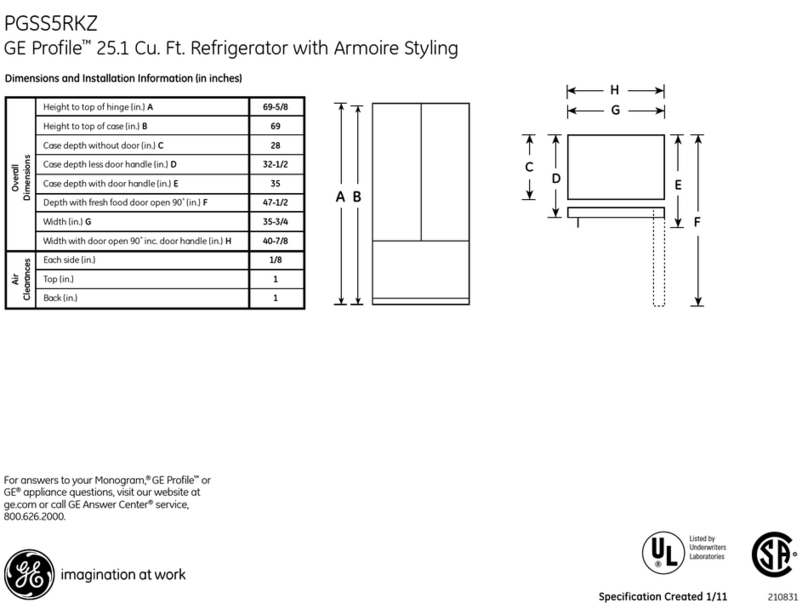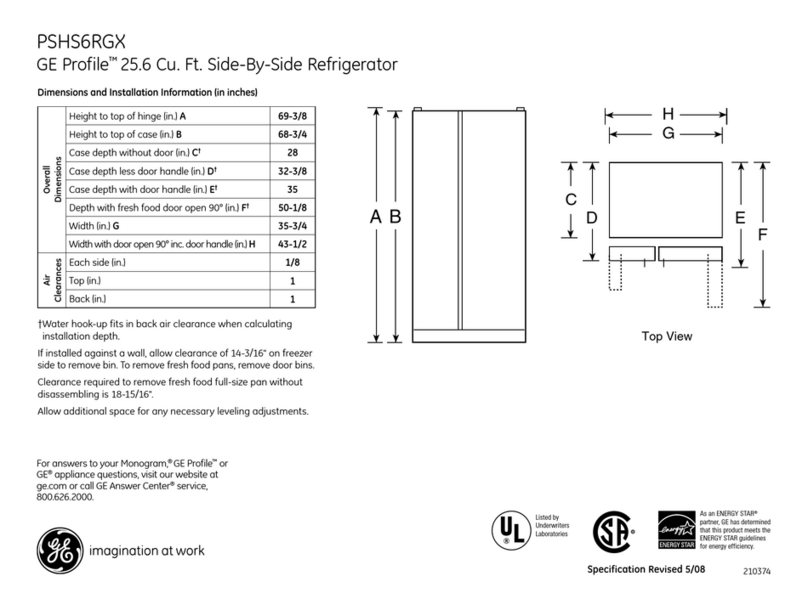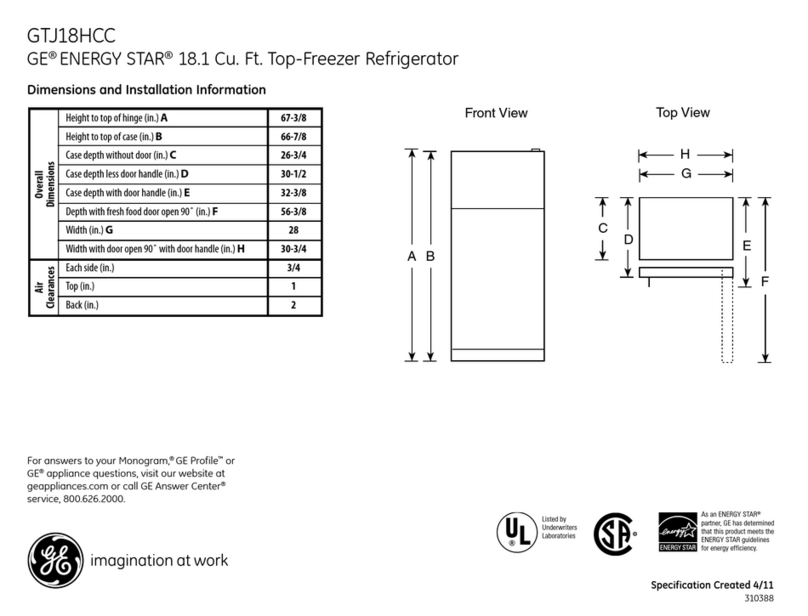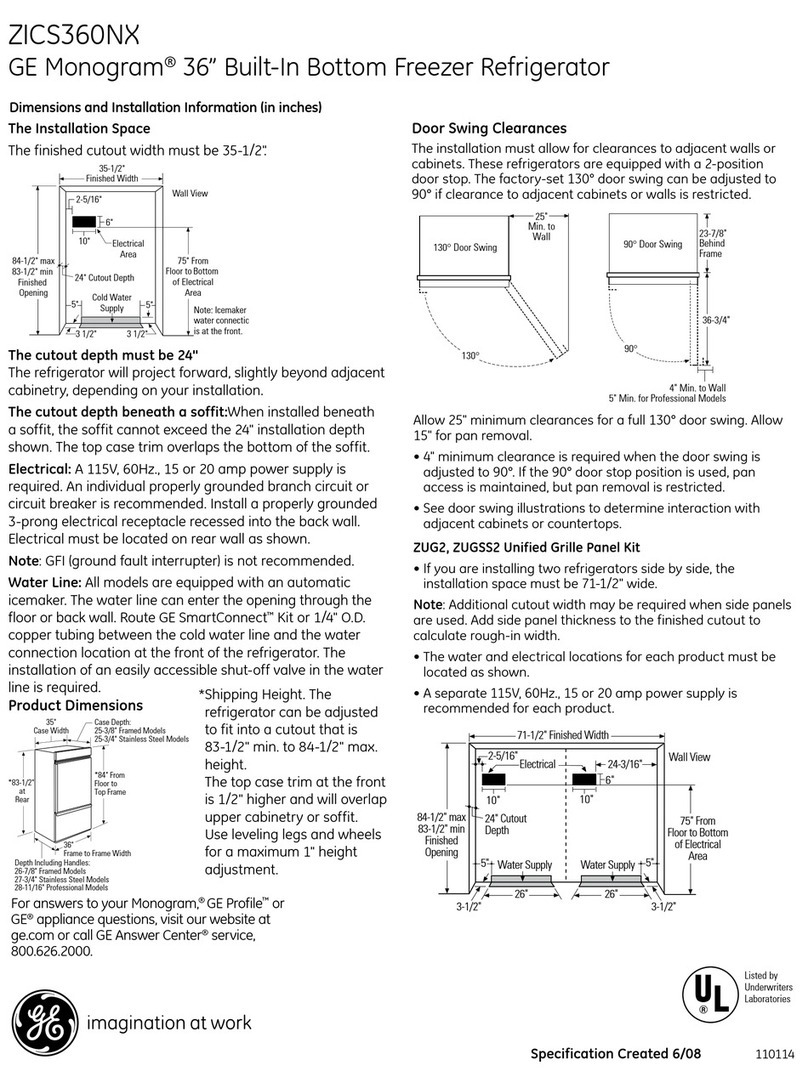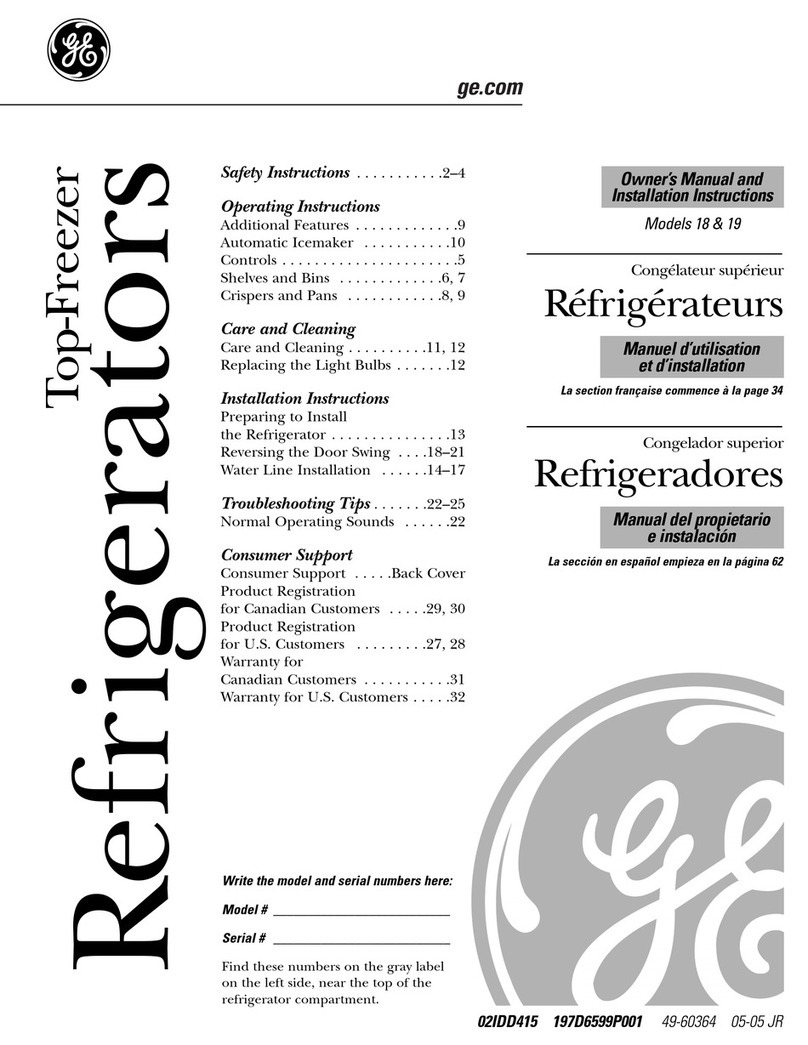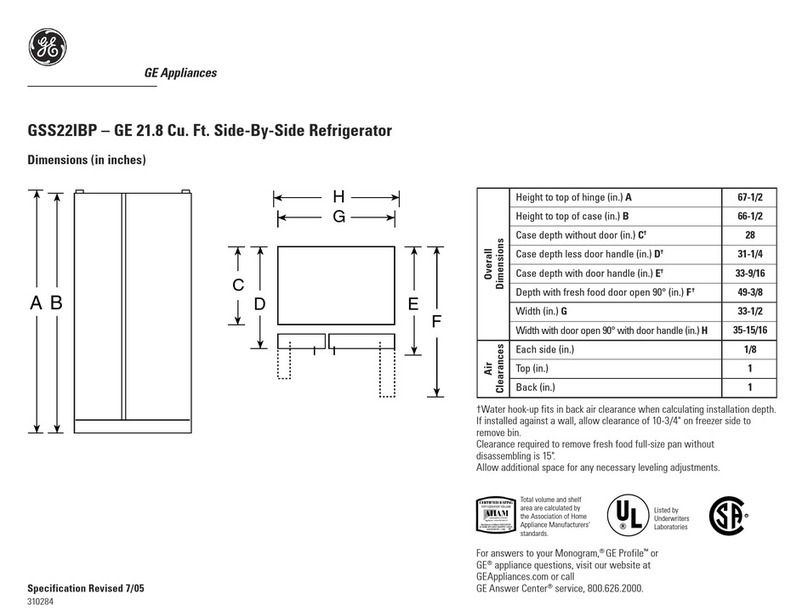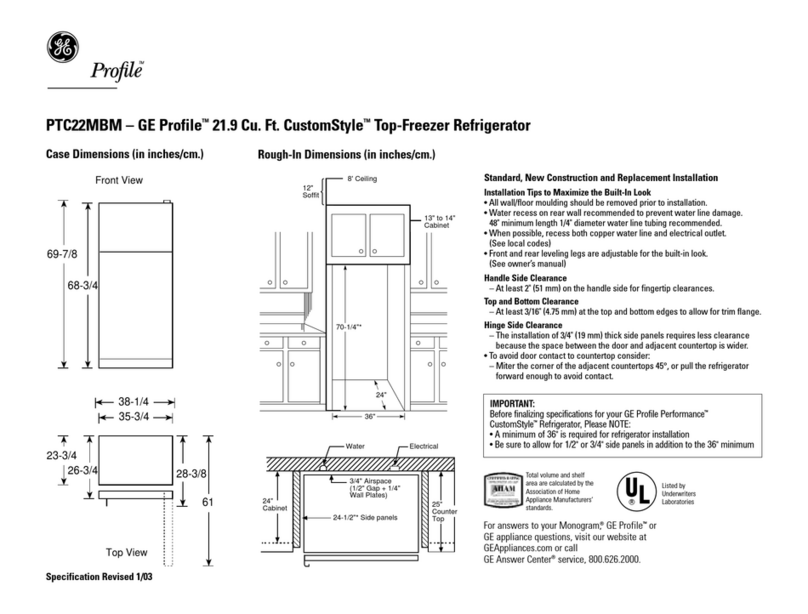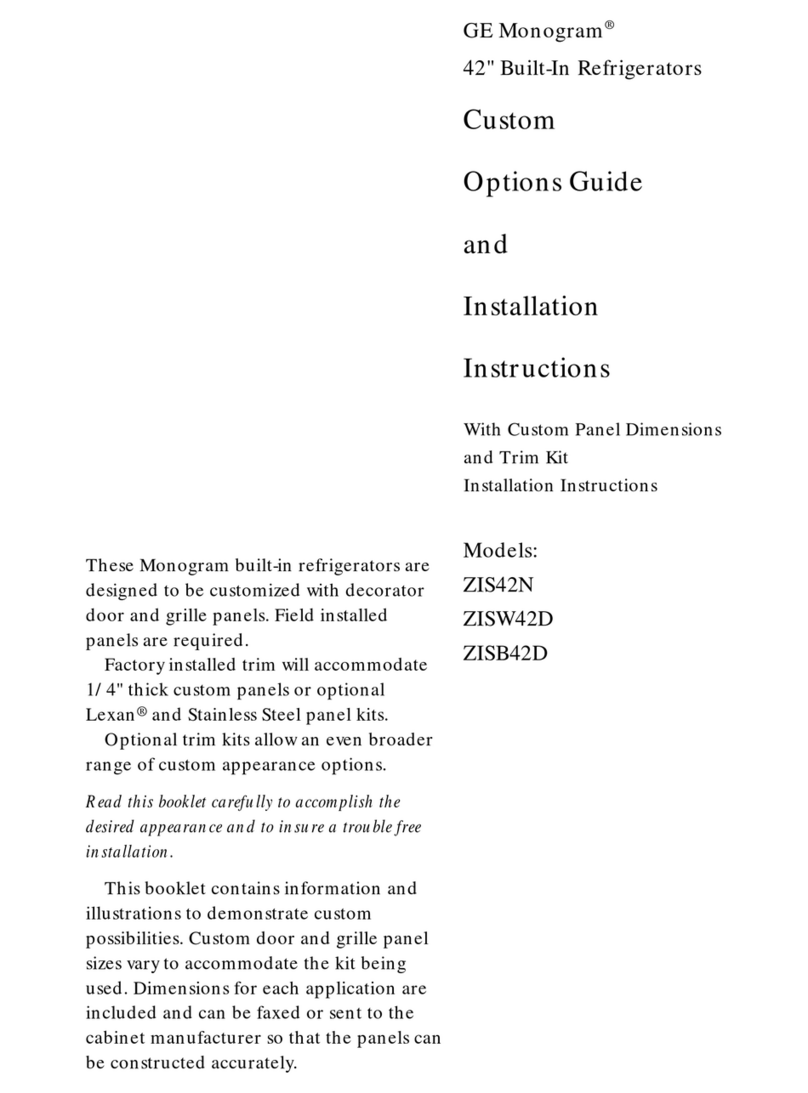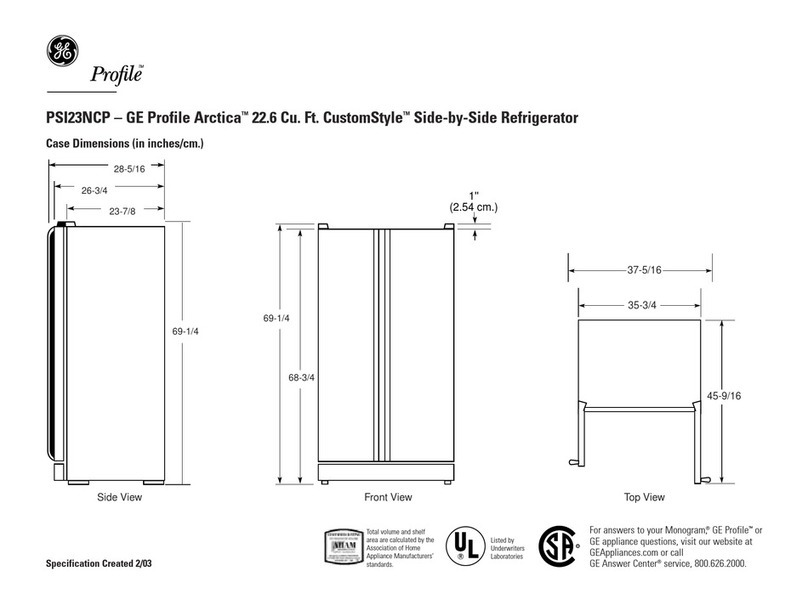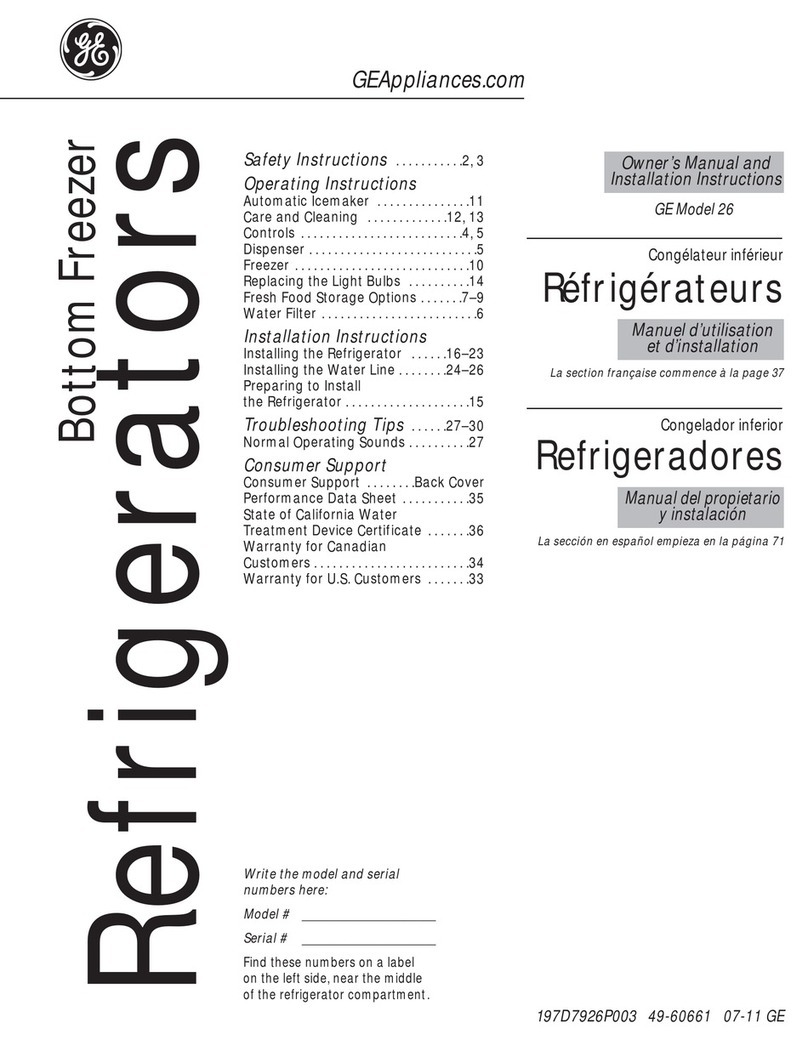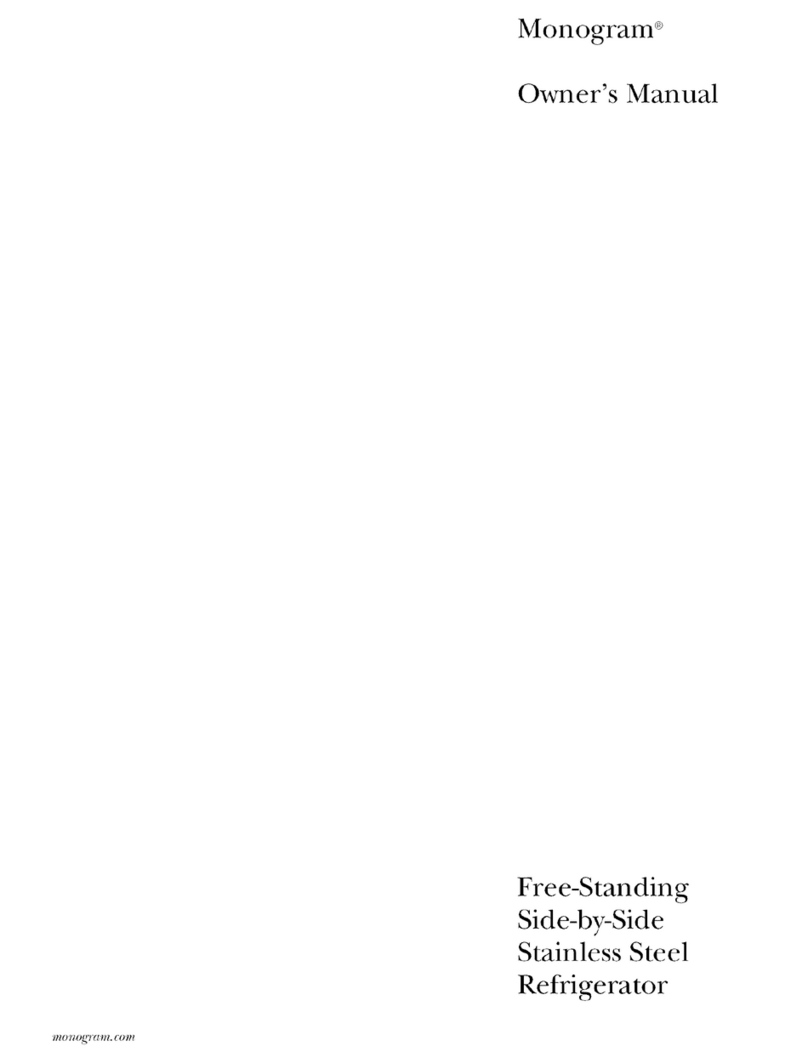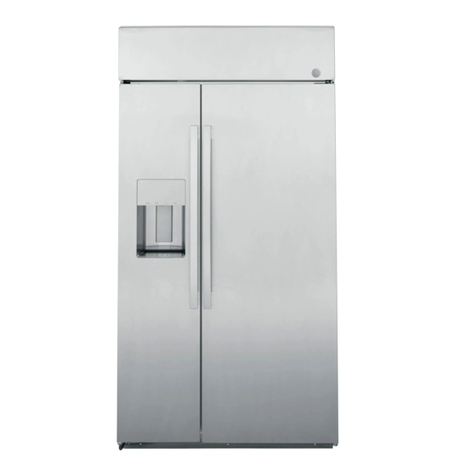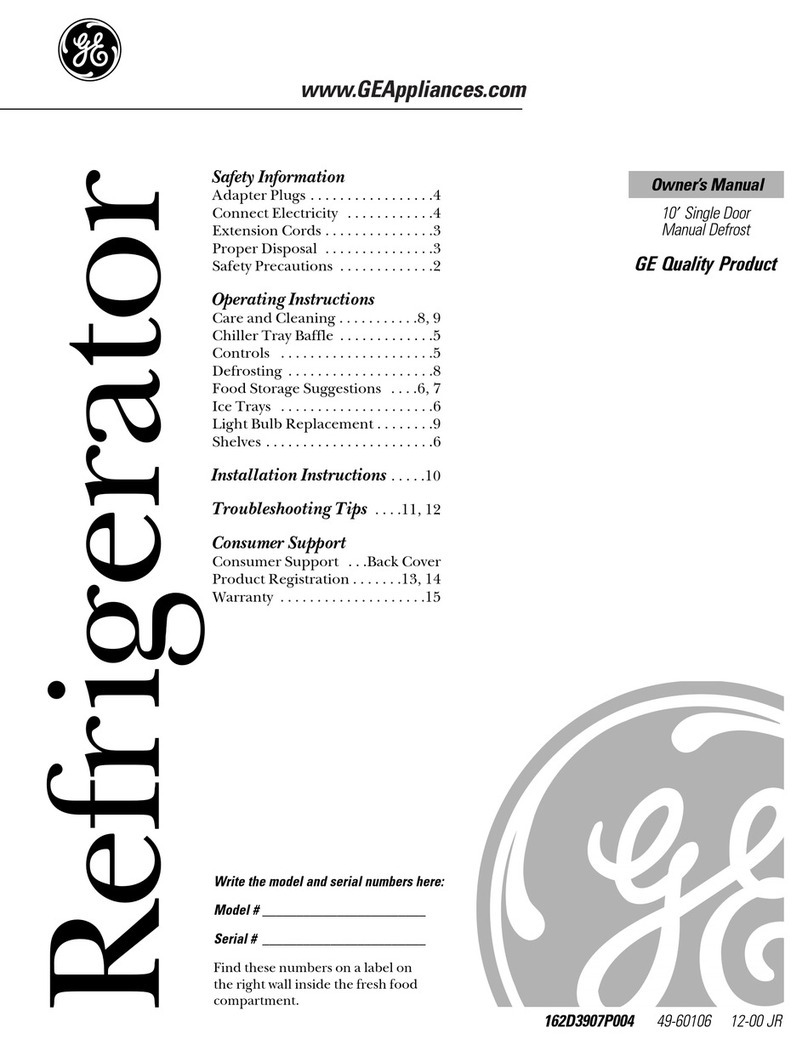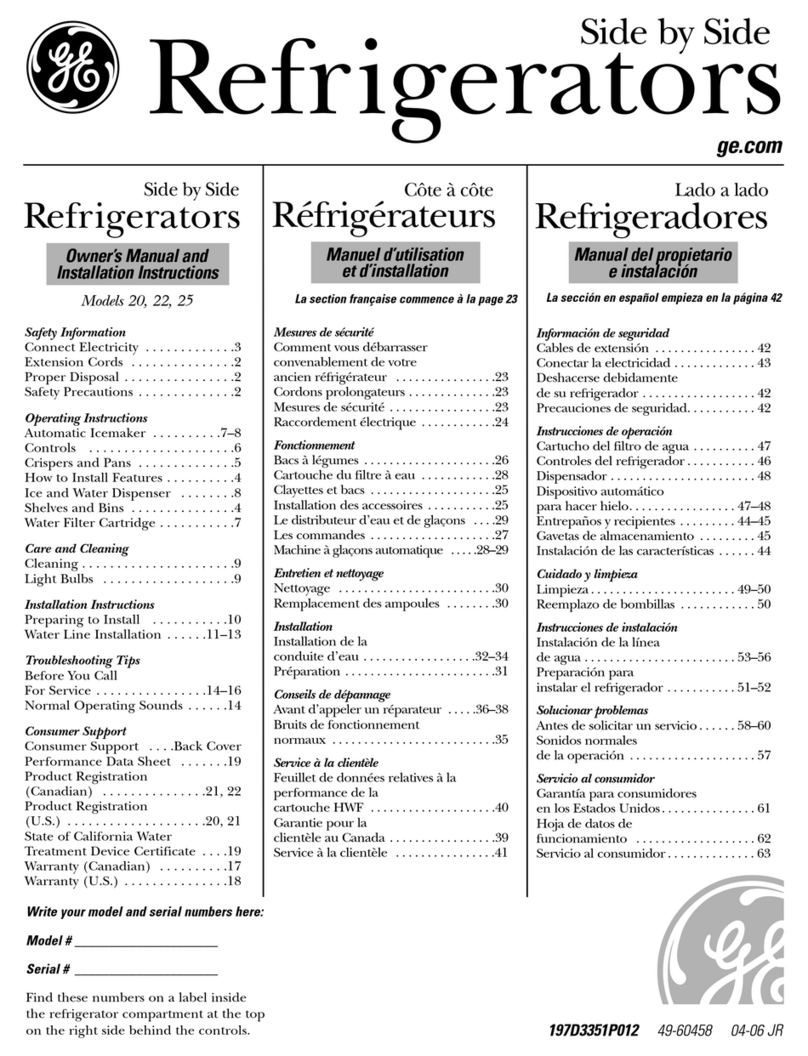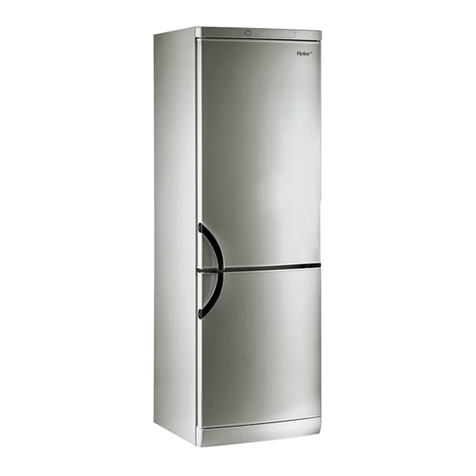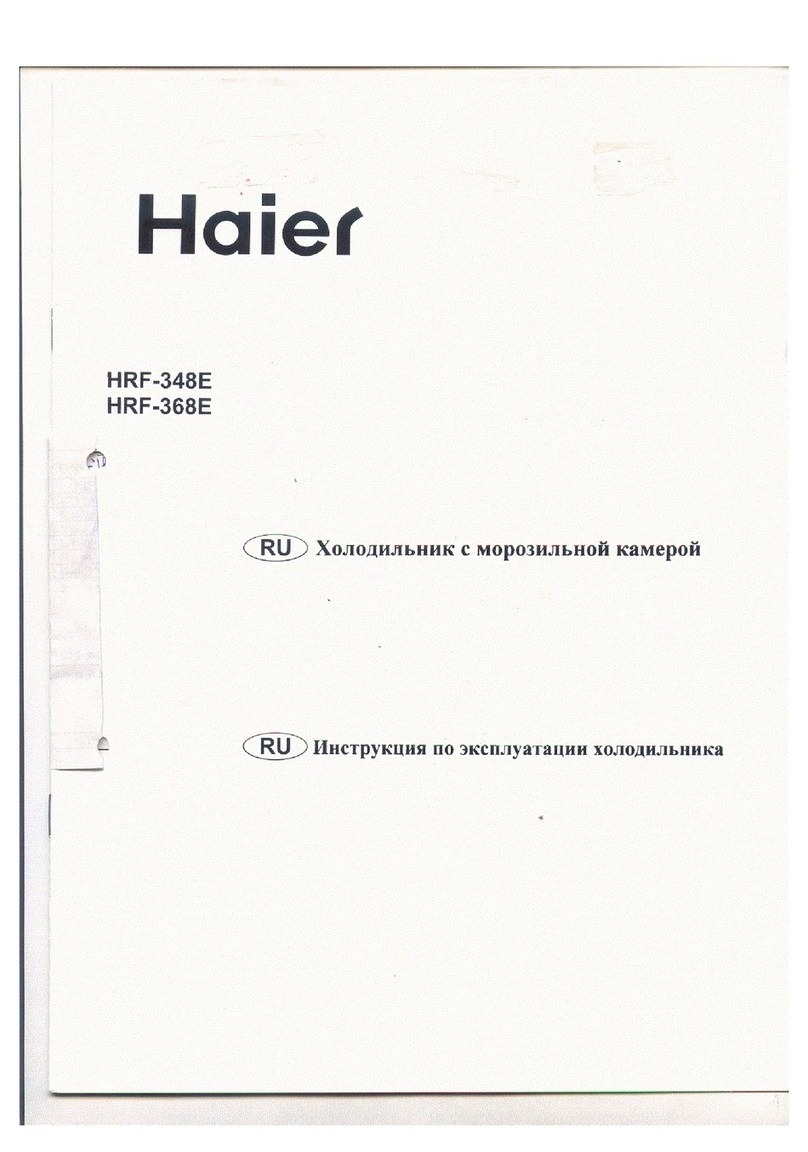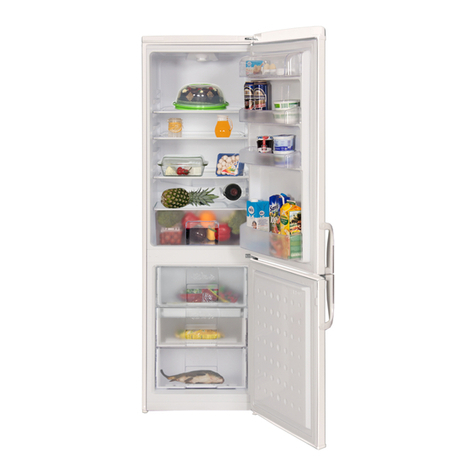DISCONNECT POWER CORD BEFORE SERVICING
IMPORTANT - RECONNECT ALL GRO NDING DEVICES
All parts of this appliance capable of conducting
electrical current are grounded. If grounding wires,
screws, straps, clips, nuts or washers used to
complete a path to ground are removed for service,
they must be returned to their original position and
properly fastened.
ELECTRICAL SPECIFICATIONS
Temperature Control (Position 5 ......................... 7-(-11 °F
Defrost Control .......................................... 60hrs @ 45 min
w/ no door openings
Overtemperature Thermostat .............................. 140-110°F
Defrost Thermistor ........................................................ 70°F
Electrical Rating: 115V AC 60 Hz ......................... 11.6 Amp
Maximum Current Leakage ................................... 0.75 mA
Maximum Ground Path Resistance .................. 0.14 Ohms
Energy Consumption . ..................................... 51 KWH/mo
NO LOAD PERFORMANCE
Control Position MID/MID
and Ambient of: ...............................................70°F90°F
Fresh Food, °F ................................................ 34-40 34-40
Frozen Food, °F .............................................. (-3 3 (-3 3
Run Time, % ...................................................... <80 <100
REFRIGERATION SYSTEM
Refrigerant Charge (R134a ............................... 6.0 ounces
Compressor ....................................................833 BTU/hr @
3000 RPM
Minimum Compressor Capacity ......................... 22 inches
Minimum Equalized Pressure
@ 70°F ....................................................................... 45 PSIG
@ 90°F ....................................................................... 57 PSIG
IMPORTANT SAFETY NOTICE
This information is intended for use by individuals
possessing adequate backgrounds of electrical,
electronic and mechanical experience. Any attempt
to repair a major appliance may result in personal
injury and property damage. The manufacturer or
seller cannot be responsible for the interpretation of
this information, nor can it assume any liability in
connection with its use.
INSTALLATION
Minimum clearance required for air circulation:
TOP ............................................................................................. 1"
SIDES ................................................................................... 0.125"
REAR ........................................................................................ 0.5"
REPLACEMENT PARTS
Temperature Control ...................................... WR55x10023
Inverter ............................................................. WR55x10155
Overtemperature Thermostat ........................ WR50x10015
Defrost Heater Harness & Thermostat ......... WR23x10142
Defrost Heater & Bracket ............................... WR51x10030
Condenser Fan Motor ..................................... WR60x10042
Evaporator Fan Motor .................................... WR60x10043
Main Board ...................................................... WR55x10156
Dispenser Board.............................................. WR55x10029
Thermistor (EV ............................................... WR55x10025
Thermistor (FZ ............................................... WR55x10026
Thermistor (FF ................................................ WR55x10027
Thermistor (FF ................................................ WR55x10028
Thermistor (CC ............................................... WR55x10030
Compressor ..................................................... WR87x10064
FF Fan Motor ................................................... WR60x10051
Damper ............................................................ WR60x10052
AIR FLOW
